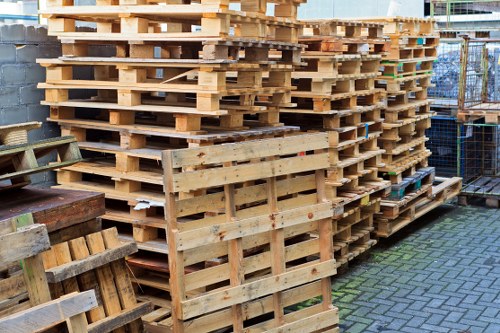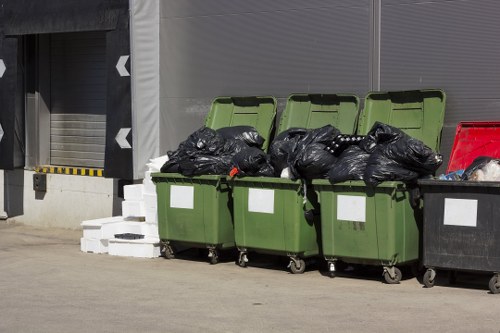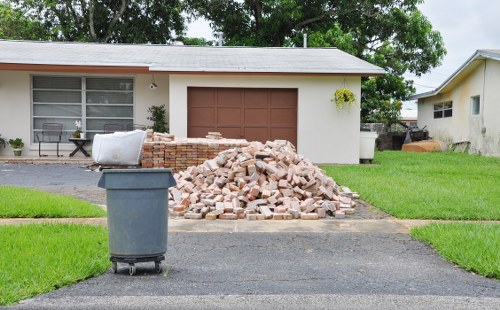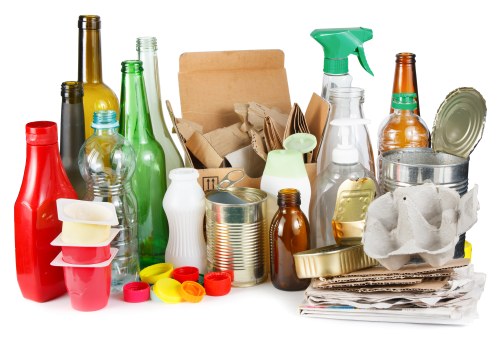Builders Waste Edmonton: Effective Management and Recycling Solutions
Builders Waste Edmonton is a critical topic for communities that are growing and developing rapidly. With new construction projects and major renovations happening throughout the city, handling construction debris correctly is essential for keeping our cities clean and sustainable.
This article provides a detailed look at builders waste in Edmonton, discussing how it is managed, why proper handling is important, and how the community can benefit from recycling practices. We aim to simplify complex ideas so everyone from homeowners to industry professionals can understand the impacts and opportunities involved.
In Edmonton, managing waste from construction and demolition projects involves a coordinated effort between government agencies, waste management companies, and local communities. By working together, they can reduce the environmental impact while also saving money and resources.

Understanding Builders Waste
Builders waste is any material left over after the construction, renovation, or demolition of buildings. It includes items such as concrete, wood, metals, glass, and other materials that are not always easy to recycle. Proper handling of this waste is crucial, as it can help reduce pollution, prevent health hazards, and conserve natural resources.
One of the core issues with Builders Waste Edmonton is the need for a safe and efficient disposal method. Traditional dumping in landfills is not a sustainable solution because it can lead to environmental degradation and high disposal costs.
Innovative solutions such as recycling, repurposing, and energy recovery are taking the forefront. These methods not only lower the environmental footprint but also offer a cost-effective strategy for managing construction waste.

What is Builders Waste?
Builders waste refers to all the debris that is created when structures are built, renovated, or demolished. The materials often vary depending on the nature of the project and can include hazardous materials such as asbestos or lead. Therefore, it is critical that such waste is processed safely and within local regulations.
Many projects generate a significant amount of debris that, when not managed properly, can harm the environment and pose risks to human health. In Edmonton, professionals are well-versed in the specific challenges associated with recycling and disposing of these materials.
Using techniques like material separation and sorting, waste management teams aim to recycle as much as possible. For instance, concrete and metals are often recycled and reused, reducing the need to mine for raw materials.

How is Builders Waste Managed in Edmonton?
Edmonton has developed processes and partnerships to manage builders waste efficiently. Waste management companies collaborate with local government and construction firms to collect, sort, and recycle most of the construction debris. This ensures that harmful materials are processed properly and efficiently.
The waste collection process begins at the site with proper sorting of materials. Workers separate recyclable materials from non-recyclables, ensuring that hazardous waste is handled with care. This systematic approach is essential to reducing the environmental impact.
Recycling facilities in Edmonton are equipped to handle various types of construction waste. These facilities extract valuable materials from the waste stream and process them for reuse. Such efforts help reduce the need for raw material extraction and support the circular economy.

The Importance of Sustainable Waste Management
The sustainable approach to handling builders waste is not merely an environmental concern—it directly affects the economy and the community. Recycling and repurposing waste materials can create jobs and reduce landfill costs significantly.
Many initiatives in Edmonton focus on educating both industry professionals and the public about the benefits of sustainable waste disposal practices. These educational programs emphasize that every bit recycled helps in reducing the overall carbon footprint.
Investing in modern waste management solutions also means better safety standards on construction sites. Safe handling and proper disposal reduce accidents and health hazards for workers and nearby residents.

Recycling Programs and Processes
Recycling programs in Edmonton are designed to recover reusable materials from builders waste. This involves several steps, including collection, sorting, processing, and then recycling. The process is designed to extract maximum value from materials that might otherwise end up in a landfill.
Sorting is one of the most crucial steps in recycling. At the construction site, professionals separate materials into various categories like concrete, wood, and metals. Specialized machinery and manual workers ensure precision in separation.
Once sorted, the materials are sent to recycling facilities where they are broken down and reformed. This recycling not only maximizes resource recovery but also reduces greenhouse gas emissions by lowering the need for manufacturing new materials.
Advanced Techniques in Reprocessing Materials
Modern technology has improved the efficiency of recycling processes in Edmonton. New machinery is capable of crushing, cutting, and separating materials, making recycling both cost-effective and reliable.
For example, concrete left over from construction can be crushed into gravel and reused in other projects. Metals, once sorted, are melted down and used to produce new building components. These achievements underscore the importance of technological advances in the field.
These advanced reprocessing techniques exemplify how waste can be turned into a resource. Communities benefit not only through environmental conservation but also through reduced costs associated with waste disposal.
Economic Benefits of Builders Waste Recycling
Investing in builders waste recycling is an investment in the local economy. When waste materials are recycled, they generate revenue and reduce the costs of raw material procurement. This in turn supports the growth of the construction and manufacturing sectors.
Local businesses find that recycling builders waste leads to reduced disposal fees and lower construction costs. This makes Edmonton an attractive place for investment in sustainable initiatives and construction projects.
Moreover, many recycled materials automatically meet regulatory requirements, making it easier for projects to comply with environmental standards. This not only streamlines the approval processes but also reduces the financial burden on construction companies.
Environmental Impact Reduction
Reducing the environmental impact of builders waste is a primary goal for Edmonton's waste management strategies. When properly managed, recyclable waste minimizes pollution and reduces greenhouse gas emissions.
Recycling initiatives lower the amount of waste heading to landfills, thus preserving land and reducing the risks of contamination to water sources. This clean-up effort is important for maintaining the local ecosystem.
Additionally, reusing materials decreases the demand for extracted resources from the earth, preserving natural landscapes and reducing energy consumption associated with manufacturing new products.
The Role of Local Government and Regulations
Local government regulations in Edmonton play a critical role in ensuring that builders waste is managed responsibly. Strict policies are in place to ensure that construction companies adhere to environmental safety standards. These regulations not only protect public health but also encourage more sustainable waste management practices.
Inspections and audits are regularly conducted to ensure adherence to environmental laws. Fines and penalties are imposed to discourage improper disposal methods, and compliance is monitored to maintain safety standards across the city.
The local government's clear communication of waste management policies helps foster community trust and strengthens waste management practices. These regulations are continually updated to keep pace with technological advancements as well as industrial growth.
Community Involvement in Builders Waste Management
Community involvement is key to the success of any waste management program. In Edmonton, awareness campaigns and community events educate residents and local workers on best practices regarding builders waste. When the community understands the benefits of recycling, they are more likely to support these initiatives.
Builders Waste Edmonton is not just a matter for large companies and government agencies; it also involves ordinary citizens. Homeowners participating in recycling programs, for instance, contribute to reducing landfill waste and lowering their environmental impact.
Partnerships between the authorities, private companies, and community groups have driven the adoption of innovative recycling technologies. These partnerships ensure that the strategies remain effective and can adapt to changing needs over time.
Local Relevance: Nearby Areas to Edmonton
Throughout the region surrounding Edmonton, several nearby areas are also involved in the safe management of builders waste. These areas contribute dynamically to the broader environmental goals and share in the innovative practices adopted in the city.
St. Albert is known for its robust community initiatives and proactive waste management strategies. Its proximity to Edmonton encourages collaboration and shared best practices between both cities.
Sherwood Park, located just east of Edmonton, is another significant area. With a strong focus on sustainable projects, Sherwood Park excels in repurposing construction debris effectively and reducing overall waste.
More Nearby Areas
Spruce Grove is recognized for its innovative approach to construction and recycling. The city’s planning includes detailed methods for separating and reusing materials, minimizing environmental impact.
Fort Saskatchewan adds to the team with a keen interest in environmental health. This nearby town has become a hub for recycling operations and sustainable practices related to construction waste.
Leduc is yet another neighbouring community that works closely with Edmonton. Leduc has a thriving industrial base that prioritizes efficient waste management as part of its development plan.
Expanding the Network: Additional Nearby Areas
Morinville is dedicated to eco-friendly practices and actively promotes recycling and waste segregation organization. Its transport links with Edmonton make the transfer of materials streamlined and straightforward.
Stony Plain also plays a vital role in the region’s builders waste management. The community embraces recycling initiatives and encourages local construction companies to adopt environmentally conscious disposal methods.
Devon and Beaumont are smaller areas that are quickly catching up with the sustainable trends set by Edmonton. Their close distance to the city ensures that they benefit from shared infrastructural developments and access to advanced recycling facilities.
Even More Regional Participants
Wetaskiwin stands out for its commitment to reducing landfill waste. The community actively participates in recycling programs and encourages local builders to consider sustainable waste management practices.
These nearby areas work collectively, strengthening the regional network for builders waste management. By sharing expertise and resources, they improve overall environmental outcomes and help create a sustainable future for all communities involved.
The collaborative spirit between Edmonton and its surrounding areas demonstrates that sustainable practices are not limited by city borders. Regionally coordinated efforts lead to more effective recycling programs and enhanced environmental stewardship.
Best Practices for Builders Waste Management
Following best practices in managing builders waste is key to successful and sustainable construction projects. Whether you are a building contractor or a homeowner planning a renovation, embracing these methods can significantly reduce waste while promoting environmental benefits.
Some essential steps include planning, correctly sorting waste, and using certified disposal methods. Early planning in the design stage can help to minimize waste and enable efficient recycling once the project ends.
Training and education are important for everyone involved in a construction process. Workers must know how to properly manage and segregate waste, ensuring hazardous materials are correctly handled and recycled.
Steps to an Eco-Friendly Project
Step 1: Plan ahead by consulting with local waste management experts. This ensures that the project design incorporates sustainable material use and waste disposal methods that comply with local regulations.
Step 2: Implement a waste segregation system onsite. Workers should separate waste into different categories such as concrete, wood, metals, and hazardous materials right from the start, simplifying the recycling processes later.
Step 3: Utilize modern recycling facilities in Edmonton. Transport the sorted materials to dedicated recycling centers where they will be processed and turned into reusable resources.
Challenges in Builders Waste Disposal
Despite the many benefits of sustainable waste management, some challenges remain. One of the most significant issues is the inconsistent flow of waste materials, which can hinder the efficiency of recycling programs. Occasional spikes in construction activity can overwhelm local recycling facilities.
Moreover, improper disposal and contamination of recyclable materials are ongoing challenges. When non-recyclable materials mix with recyclable ones, it often reduces the quality and efficiency of the recycling process.
Lastly, public awareness and education remain critical. Ensuring that builders and homeowners are informed about the correct ways to handle waste will prevent many of these challenges from becoming larger systemic issues.
Overcoming These Challenges
The local government and private companies in Edmonton work together to overcome these issues through regular audits, industry training sessions, and public information campaigns. These combined efforts help streamline the waste management process and reduce contamination rates.
Investments in technology also offer promising solutions. For instance, automated sorting machines can handle large volumes of debris with a high level of accuracy, ensuring that recyclable materials are not inadvertently discarded.
Finally, community engagement and partnerships are crucial in solving these issues. Educated communities and trained professionals collaboratively work toward reducing risks and establishing a reliable recycling network.
Future Outlook for Builders Waste in Edmonton
The future of builders waste management in Edmonton looks promising, with constant advancements in recycling technology and improved regulatory frameworks. Increased industrial collaboration and government support make it easier to implement eco-friendly practices on a larger scale.
Looking ahead, cities like Edmonton are expected to play a leading role in environmental sustainability by turning waste into valuable resources. As more communities adopt innovative recycling techniques, the overall impact of construction debris on the environment can be significantly reduced.
The optimistic outlook is driven by ongoing research and development in waste management technologies. These innovations promise to streamline the recycling process further and establish robust systems that can handle fluctuating amounts of construction waste, enhancing both economic and environmental outcomes.
Embracing a Sustainable Future
Ultimately, the practices and policies developed around Builders Waste Edmonton are a model for cities facing similar challenges. As urban areas continue to expand, sustainable builders waste management is not only essential for the environment but also for the economies of growing communities.
With concerted community efforts and continuous investment in innovative methods, recycling and reusing construction materials can turn perceived waste into a valuable resource. The commitment of local authorities, businesses, and residents sets Edmonton apart as a leader in this field.
The positive impact of these initiatives transcends simple waste disposal—it fosters a culture of sustainability and responsibility. By turning waste into opportunities, Edmonton is paving the way for a greener, more efficient future.
Frequently Asked Questions
Q1: What exactly is Builders Waste Edmonton?
A1: Builders Waste Edmonton refers to construction debris, including materials like concrete, metal, and wood, generated by building and demolition projects in Edmonton. It is managed through careful sorting, recycling, and disposal methods.
Q2: Why is proper management of builders waste important?
A2: Proper management minimizes environmental impact, reduces landfill use, saves costs, and protects public health by ensuring hazardous materials are safely processed.
Q3: How does Edmonton manage construction waste?
A3: Edmonton utilizes a mix of onsite sorting, recycling facilities, government regulations, and technological advancements to handle construction waste effectively and sustainably.
Q4: Are nearby communities involved in builders waste management?
A4: Yes, nearby areas such as St. Albert, Sherwood Park, and Spruce Grove collaborate closely with Edmonton, sharing resources and expertise for effective waste disposal.
Q5: What future improvements can we expect in this field?
A5: Future improvements include further advancements in recycling technology, increased automation in waste sorting, and more robust collaborative efforts between government, industry, and local communities.
